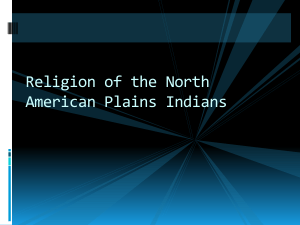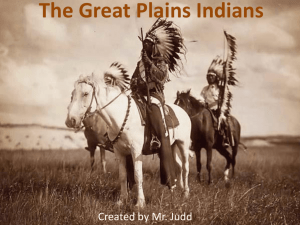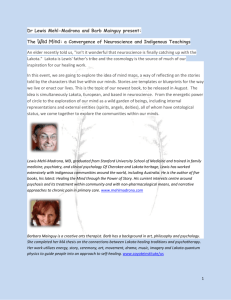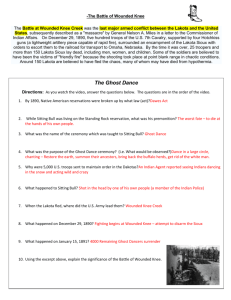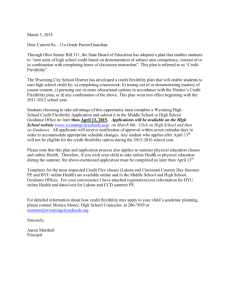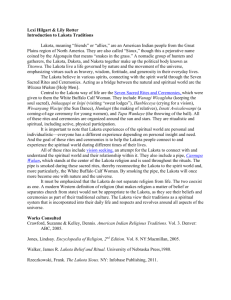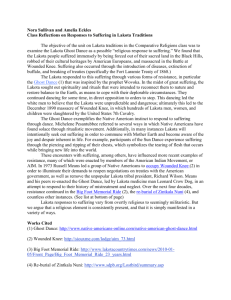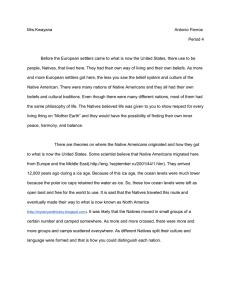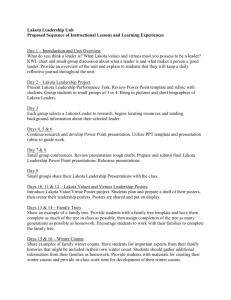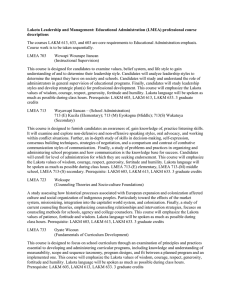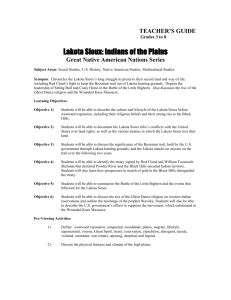Plains Indians Religion
advertisement
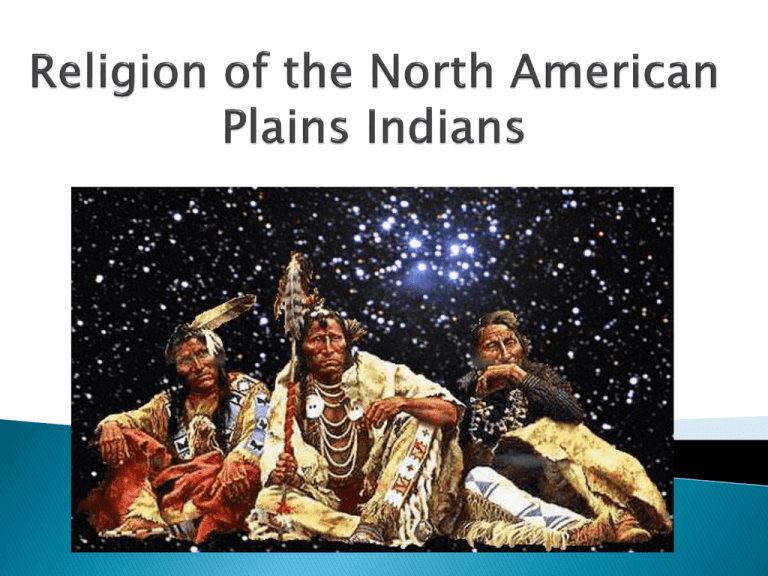
Many Plains Indian tribes share the basic beliefs of the Lakota tribe ◦ The Lakota led the confederacy of tribes that defeated Custer and his troops at the Battle of the Little Bighorn (1876) ◦ More than 200 Lakota massacred at Wounded Knee in South Dakota as the wars ended between the Natives and whites (1890) Religion = a way of life The energy of the Creator is present everywhere and within all things ◦ The “ordinary” = sacred – no distinction Video: Lakota Wisdom Keepers – Lakota Worldview http://www.youtube.com/watch?v=qU4p_StNFpc What elements of truth or of the sacred did you find in the Lakota Wisdom Keepers’ religious views of the world we share? What do you think of Nathan Chasing Horse’s argument that being a warrior means learning how to cry as a means of showing understanding and compassion? ◦ How does this compare to a Western view of masculinity or manhood? Wakan Tanka = the supreme reality or “most sacred” ◦ Refers to 16 separate deities ◦ 16 is derived from the number 4, the most sacred number in Plains religion due to the 4 compass directions Purpose: Means for an individual to gain access to spiritual power that will ensure greater success or spiritual insight in her or his life Path for individuals to reach a state of transcendence Spiritual and physical purification in the sweat lodge Interpretation of the vision and message by a medicine woman or man Isolation in nature, endurance of elements, and performance of rituals Arrival of a vision, message, and/or guardian spirit The spiritual powers and insights gained from the quest affect the rest of the individual’s life Undertaken for the benefit of the whole community Commitment made by the dancers to dance and fast for days for themselves, the community, and the supreme being ◦ Offerings made to Wakan Tanka The sun is venerated for its life-giving powers A tree is ritually set upright in a chosen spot ◦ The tree = the Axis Mundi (the axis or center of the universe) ◦ Functions as the link between the earth and heavens; represents the supreme being The lodge is constructed of 28 poles, placed in a circle around the tree ◦ Represent the 28 months of the lunar calendar The finished lodge represents the universe with its four compass directions Some dancers skewer the flesh of their chests and attach themselves to the tree with leather thongs They pull back from the tree as they dance until their flesh tears Believe their bodies are the only things they truly own and therefore see this as the only suitable sacrifice to the supreme being http://www.youtube.com/watch?v=PZtvsML _iO8 http://www.youtube.com/watch?v=b96RcPF RHXs Sun Dance outlawed by the U.S. government/Christian-Catholic missionaries between the late 1880s and the 1930s ◦ Many Native rituals and customs were restricted by law through the reservation system ◦ The Sun Dance was said to be dangerous because it required dancers to fast for extended periods of time and to cut their own flesh ◦ Also thought to be politically and religiously dangerous (potential for rebellion + “devil worship”) Pan-Indian Movement ◦ Modeled on Plains Indian religion ◦ Unites Native Americans across the Americas regardless of tribal or local affiliations ◦ Participate in traditional Native ceremonies such as the Sun Dance to promote Native PRIDE ◦ Both a POLITICAL and RELIGIOUS movement ◦ Protects the interests of Native peoples Video: Modern-day Conditions on the Pine Ridge Reservation http://www.youtube.com/watch?v=0w8WWnd6 e8I Why are tools of resistance important for Native peoples today? What ways can religion be a tool of resistance for Native peoples? Cosmology – An understanding or theory of the nature, origin, development, and eventual fate of the universe Transcendence – A state of being that has overcome the normal limitations imposed by the human condition of physical existence Axis Mundi – The axis or center of the universe Religious and Political Pan-Indian Movement Modeled on: Plains Indian Religion Modeled on: Lakota Religious beliefs and practices (Tribe who led the defeat of Custer and his troops at the Battle of the Little Bighorn and who were massacred at Wounded Knee)
